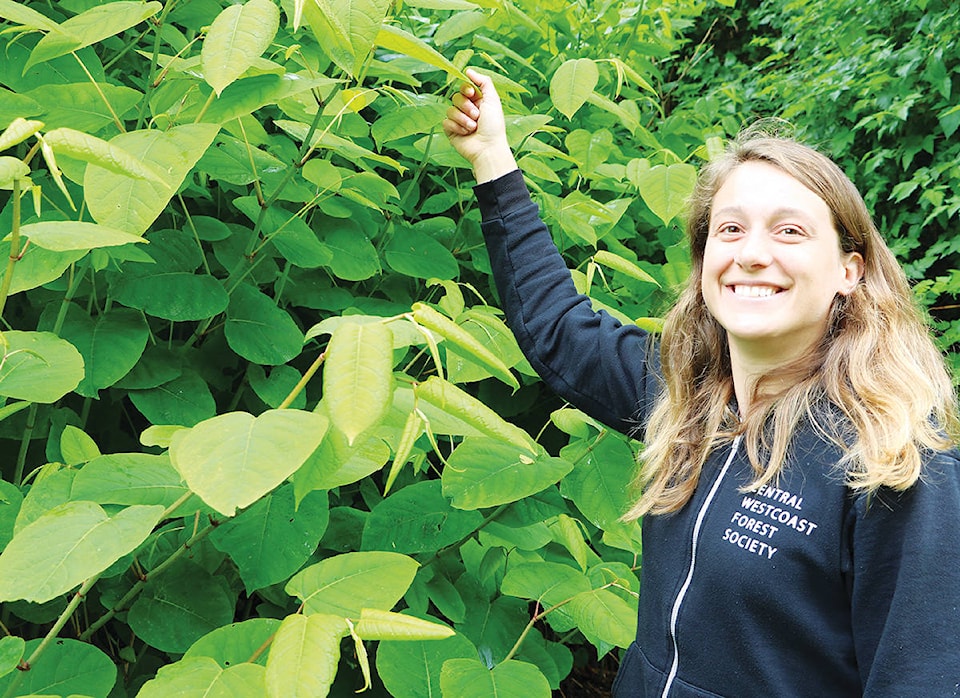A stubborn patch of Japanese Knotweed has been wreaking havoc on a riparian area near Ucluelet’s Big Beach for the past several years and the Central Westcoast Forest society is upping its fight to contain it by bringing herbicide into the fray.
“We don’t want this to be here in our community and we don’t want it to spread anymore,” CWFS staffer Emily Grubb told the Westerly News.
Japanese Knotweed is an aggressively invasive species that grows tall, three-metre-high, bamboo-like stems. It grows quickly, outpacing native vegetation and blocking needed plant-life from the sun. Patches of it can spread rapidly and leave little room for other species to grow, which is a significant problem in riparian areas that require native vegetation to stabilize the surrounding soil.
“Even though [knotweed] has a very large rooting system, it doesn’t act as very good stabilization for the stream bank because it is quite loose and frail,” Grubb said. “What we want is for native plants to grow up big and strong in the riparian area.”
The Central Westcoast Forest Society tried to kill the Big Beach knotweed patch in 2013 by excavating the area and digging up the knotweed’s roots, which can grow into elaborate systems roughly seven metres underground, but that effort was unsuccessful.
“Unfortunately, with knotweed, any little pieces that are left behind can easily lead to more plants growing,” Grubb said. “Now, we’ve turned to the use of herbicide to help remove, control and contain this knotweed.”
She said CWFS will administer the herbicide slowly, roughly three times a year over the next three years.
“The idea of slowly killing the plant is because they have such large rooting systems,” she said. “The slower we can kill it, the more likely it is to get down into the roots and have bigger success.”
Locals are invited to help infuse the area with native plant species at a planting day event scheduled for July 8, which will serve as a celebration for the knotweed removal project’s launch.
“It’s going to be incredibly exciting and it’s a great way to learn about invasive species and how harmful they can be to our local ecosystem,” Grubb said.
